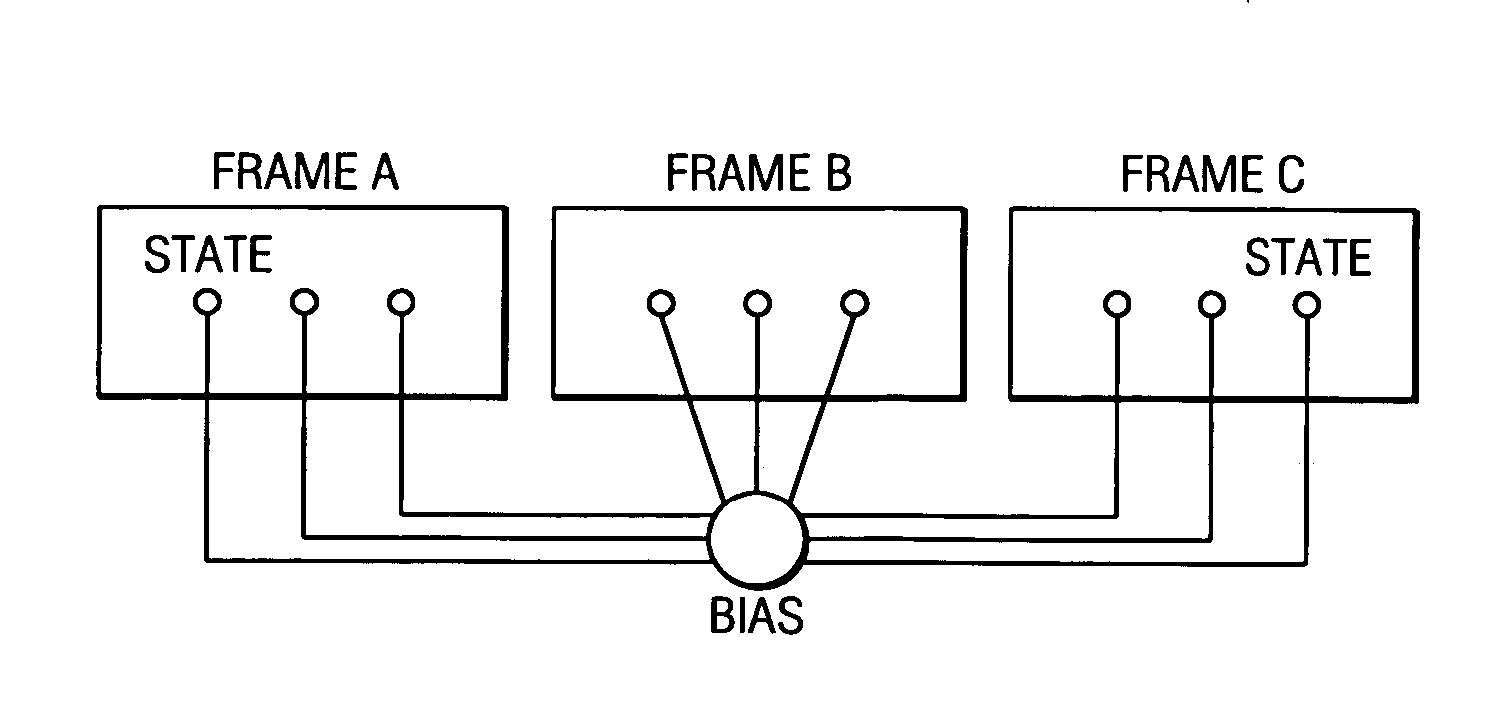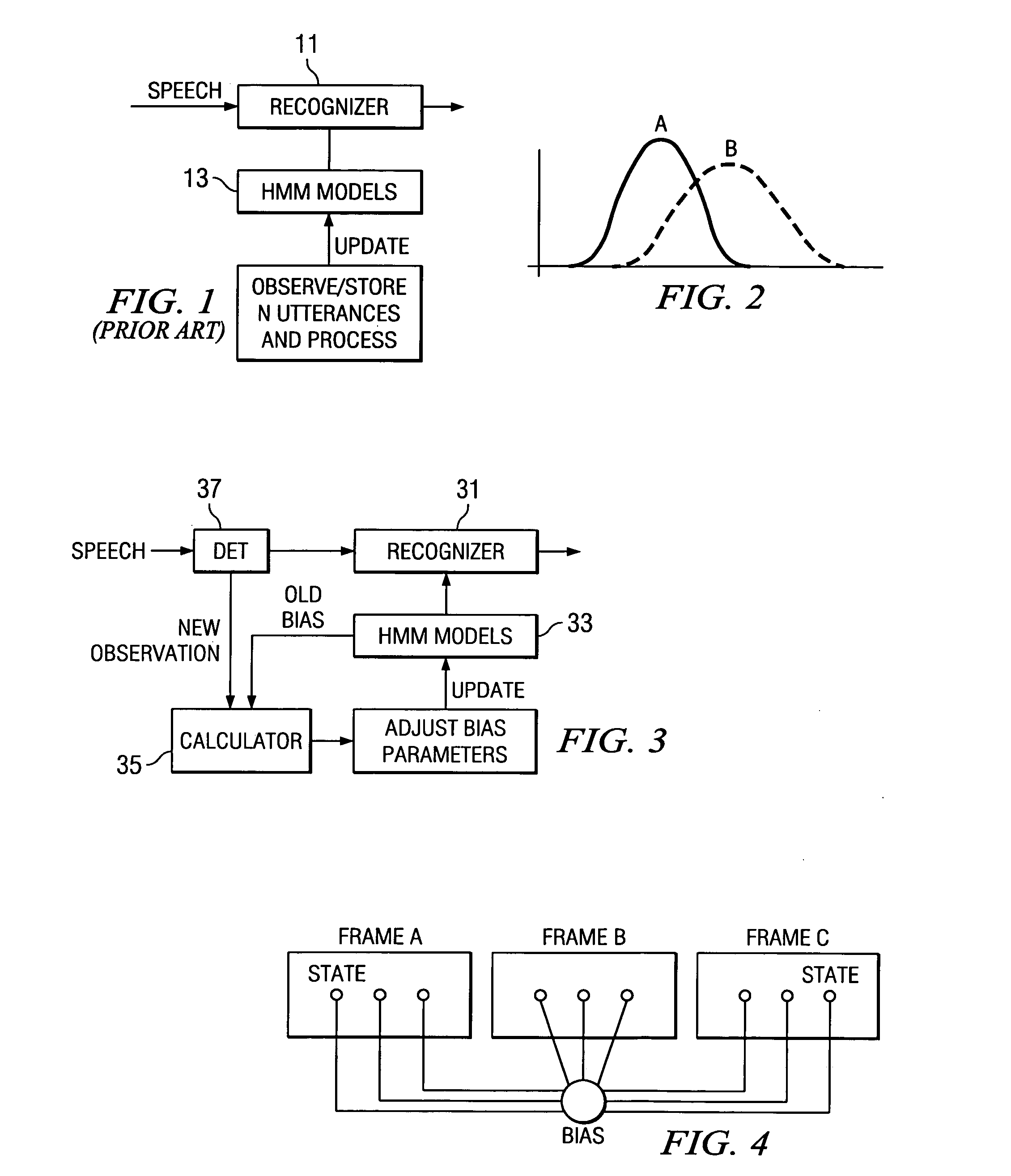Incremental adjustment of state-dependent bias parameters for adaptive speech recognition
a speech recognition and adaptive technology, applied in the field of speech recognition, can solve the problems of not being able to adapt the system to the speaker and the channel, not being able to follow slow time-varying environments and speaker changes, and not being able to track parameter variations
- Summary
- Abstract
- Description
- Claims
- Application Information
AI Technical Summary
Problems solved by technology
Method used
Image
Examples
Embodiment Construction
[0011] A speech recognizer as illustrated in FIG. 1 includes speech models 13 and speech recognition is achieved by comparing the incoming speech to the speech models such as Hidden Markov Models (HMMs) models at the recognizer 11. This invention is about an improved model used for speech recognition. In the traditional model the distribution of the signal is modeled by a Gaussian distribution defined by μ and Σ where μ is the mean and Σ is the variance. The observed signal Ot is defined by observation N (μ,Σ). Curve A of FIG. 2 illustrates a Gaussian distribution. If you have noise or any distortion such as a difference speaker or microphone channel the values change such as represented by curve B of FIG. 2. In the prior art Expectation Maximization (EM) approach the procedure is to observe the utterance N and then do an update. The formulation required a specified number of utterances is used to get a good mean bias. There is a need to collect adaptation data and noise statistics....
PUM
 Login to View More
Login to View More Abstract
Description
Claims
Application Information
 Login to View More
Login to View More - R&D
- Intellectual Property
- Life Sciences
- Materials
- Tech Scout
- Unparalleled Data Quality
- Higher Quality Content
- 60% Fewer Hallucinations
Browse by: Latest US Patents, China's latest patents, Technical Efficacy Thesaurus, Application Domain, Technology Topic, Popular Technical Reports.
© 2025 PatSnap. All rights reserved.Legal|Privacy policy|Modern Slavery Act Transparency Statement|Sitemap|About US| Contact US: help@patsnap.com



